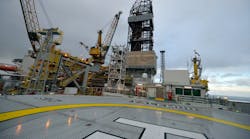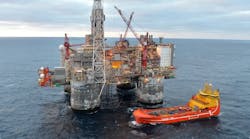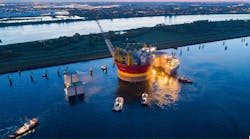Editor's note: This story first appeared in the November-December 2022 issue of Offshore magazine. Click here to view the full issue.
By Gina Cohen, Consultant
Europe has realized by now how difficult its energy supply and demand equation has become, while still being partially in denial about how likely it is that next winter may be worse.
For a decade, we have all been able to recite that insofar as the energy trilemma is concerned – availability, affordability, sustainability – that one came at the expense of the other. For example, cheaper coal meant more pollution, but policy makers were able to offset one against the other based on each country’s priorities.
Over the last few years, Europe has primarily been concerned with sustainability, taking the other two aspects for granted (availability, affordability). With the outbreak of the Russian-Ukraine war, it became imminently clear that in Europe at least, all three aspects of the trilemma had suffered a severe blow: prices skyrocketed, renewables didn’t supply all the goods, and many countries had recourse to coal with the ensuing higher levels of pollution and emissions, if not also prices as coal itself became more expensive.
Today, the discourse has become nearly totally engrossed on energy affordability. Although energy security has also become more relevant with cuts in natural gas supplies from Russia and attacks on vital infrastructure, a real fear of a dire lack of energy has not yet hit home. If there should indeed be a serious dearth of natural gas supplies before the world can satisfy its energy needs by other means, then certainly sustainability will no longer be a concern, and potentially not even affordability.
On the availability front, there is one basin, the East Mediterranean basin, which is home to proven developed or developing gas reserves from offshore Egypt, Israel, and Cyprus, some of which could make their way to Europe. The region has a total of about 800 bcm of gas that could be exported over the next two decades.
Here are some of the main potential export options:
LNG from Egypt. In the immediate term, 5-10 bcm a year is and can continue to be exported as LNG via Egypt depending on ullage at the Egyptian facilities, and consumption needs within Egypt.
Boosting LNG from Egypt. In the mid to longer term, exporting another 10 bcm of LNG via Egypt is possible. This would require a new offshore route to pipe Israeli and Cypriot gas to Egypt’s LNG facilities, and the upgrading of liquefaction facilities. This could probably be done in the shortest time span and with the lowest capital expenditure as compared with other export scenarios, and will boost the already-positive cooperation between Israel and Egypt.
The Poseidon project. This proposal calls for construction of a 2,000-kilometer pipeline system, mostly offshore, but also partially onshore, from Israel via Cyprus and Greece and up to southeast Italy. This is probably the furthest advanced project in terms of feasibility studies and has received EU financial aid of €35 million for the studies. It would provide a totally new dedicated source of pipeline gas into Europe with its own pricing benchmark.
Pipeline to Turkey. This is certainly the shortest direct route into Europe, but years of enmity between Turkey and Israel means that a substantial diplomatic change has to take place and strong guarantees provided to move in this direction. The project is still an interesting one that can benefit from Turkey’s interconnection via the Trans-Anatolian natural gas pipeline and Trans-Adriatic pipeline into Eastern and Central Europe.
Israeli FLNG facility. This is an option that has grown in traction over recent months. This would provide a measure of independence from geopolitical hurdles and optimum flexibility of supply and control over the asset. The capital investment required would probably be similar to that of a pipeline to Europe for the same volume of gas, albeit with higher operational expenses and higher carbon footprint due to the liquefaction and shipping elements. This is an option that has come to the forefront recently as it circumvents all of the hurdles and quagmires that a large-scale Egyptian LNG option or Turkish option could entail. It is also more complex technically than a pipeline to Egypt or Turkey, while FLNG also still represents a niche market.
Each of the options above has its inherent advantages and disadvantages. Some hurdles are geopolitical, others more technical or commercial in nature, but each one of the projects could be achieved.
To avail itself of this opportunity, Europe will need to provide clarity about what it wants its energy policy to be over the long-term rather than focus on the short-term; and enact policies to realize one or two of these options. Hitherto there has been a lot of good vibes and discussions, but it is ample time to move ahead with the implementation stage.
About the author: Gina Cohen is a natural gas analyst, lecturer and consultant in the Eastern Mediterranean.





